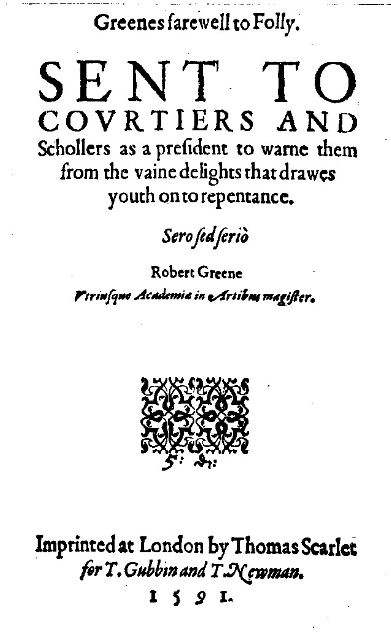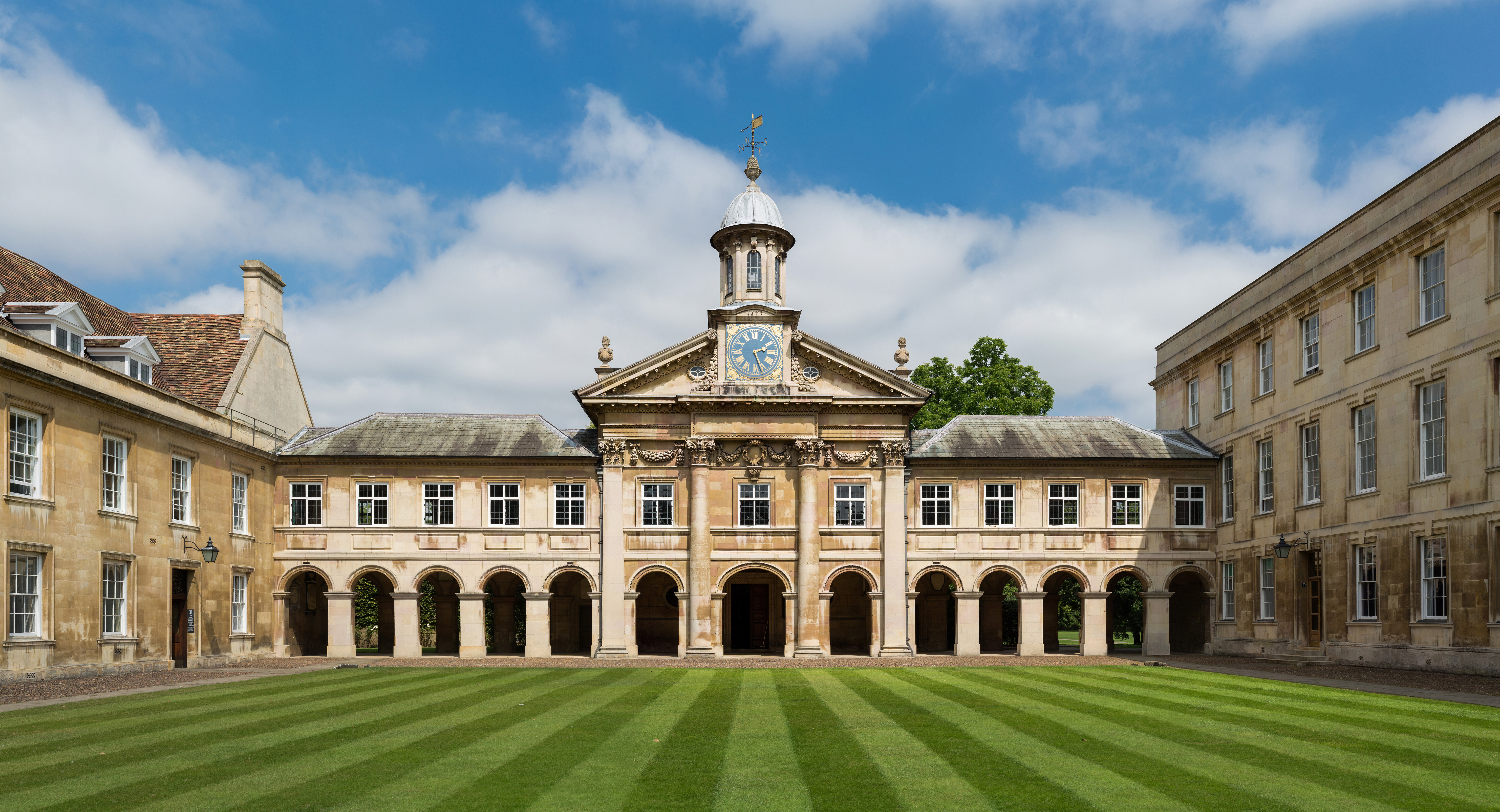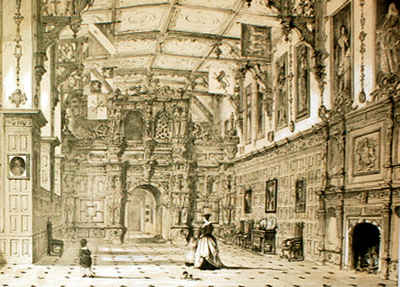|
Gabriel Harvey
Gabriel Harvey (c. 1552/3 – 1631) was an English writer. Harvey was a notable scholar, whose reputation suffered from his quarrel with Thomas Nashe. Henry Morley, writing in the ''Fortnightly Review'' (March 1869), has argued that Harvey's Latin works demonstrate that he was distinguished by qualities very different from the pedantry and conceit usually associated with his name. Family Gabriel Harvey was the eldest son of John Harvey (d.1593), a yeoman farmer and master ropemaker from Saffron Walden, Essex, and his wife, Alice (d.1613). He had two younger brothers, Richard and John (d. July 1592), and a sister, Mercy. Education Harvey received his early education at the town's grammar school, and matriculated at Christ's College, Cambridge, in 1566. In 1570 he was elected fellow of Pembroke Hall. Here he formed a friendship with Edmund Spenser, who may have been his pupil. Promotion of hexameter verse Harvey wished to be "epitaphed as the Inventour of the English Hexam ... [...More Info...] [...Related Items...] OR: [Wikipedia] [Google] [Baidu] |
The Shepheardes Calender
''The Shepheardes Calender'' was Edmund Spenser's first major poetic work, published in 1579. In emulation of Virgil's first work, the ''Eclogues'', Spenser wrote this series of pastorals at the commencement of his career. However, Spenser's models were rather the Renaissance eclogues of Mantuanus. The title, like the entire work, is written using deliberately archaic spellings, in order to suggest a connection to medieval literature, and to Geoffrey Chaucer in particular. The poem introduces Colin Clout, a folk character originated by John Skelton, and depicts his life as a shepherd through the twelve months of the year. The ''Calender'' encompasses considerable formal innovations, anticipating the even more virtuosic ''Countess of Pembroke's Arcadia'' (The "Old" ''Arcadia,'' 1580), the classic pastoral romance by Sir Philip Sidney, with whom Spenser was acquainted. It is also remarkable for the extensive commentary or gloss included with the work in its first publication, a ... [...More Info...] [...Related Items...] OR: [Wikipedia] [Google] [Baidu] |
Huntington Library
The Huntington Library, Art Museum and Botanical Gardens, known as The Huntington, is a collections-based educational and research institution established by Henry E. Huntington (1850–1927) and Arabella Huntington (c.1851–1924) in San Marino, California, United States. In addition to the library, the institution houses an extensive art collection with a focus on 18th- and 19th-century European art and 17th- to mid-20th-century American art. The property also includes approximately of specialized botanical landscaped gardens, most notably the "Japanese Garden", the "Desert Garden", and the "Chinese Garden" (Liu Fang Yuan). History As a landowner, Henry Edwards Huntington (1850–1927) played a major role in the growth of Southern California. Huntington was born in 1850, in Oneonta, New York, and was the nephew and heir of Collis P. Huntington (1821–1900), one of the famous "Big Four" railroad tycoons of 19th century California history. In 1892, Huntington relocated ... [...More Info...] [...Related Items...] OR: [Wikipedia] [Google] [Baidu] |
Robert Greene (16th Century)
Robert Greene (1558–1592) was an English author popular in his day, and now best known for a posthumous pamphlet attributed to him, '' Greene's Groats-Worth of Witte, bought with a million of Repentance'', widely believed to contain an attack on William Shakespeare. Robert Greene was a popular Elizabethan dramatist and pamphleteer known for his negative critiques of his colleagues. He is said to have been born in Norwich. He attended Cambridge where he received a BA in 1580, and an M.A. in 1583 before moving to London, where he arguably became the first professional author in England. Greene was prolific and published in many genres including romances, plays and autobiography. Family According to the author Brenda Richardson, the "chief problem" in compiling a biography of Robert Greene was his name. ''Robert'' was one of the most popular given names of the era and ''Greene'' was a common surname. L. H. Newcomb suggests that Robert Greene "was probably the Robert Greene, so ... [...More Info...] [...Related Items...] OR: [Wikipedia] [Google] [Baidu] |
Martin Marprelate
Martin Marprelate (sometimes printed as Martin Mar-prelate and Marre–Martin) was the name used by the anonymous author or authors of the seven Marprelate tracts that circulated illegally in England in the years 1588 and 1589. Their principal focus was an attack on the episcopacy of the Anglican Church. Background In 1583, the appointment of John Whitgift as Archbishop of Canterbury had signalled the beginning of a drive against the Presbyterian movement in the church, and an era of censorship began. In 1586, by an edict of the Star Chamber, the archbishop was empowered to license and control all of the printing apparatus in the country. Identity and authorship The true identity of "Martin" was for a long time the subject of speculation. For many years, the main candidate was John Penry, a Welsh preacher and author of several impassioned polemics against the state of the church. Renaissance historian John Dover Wilson posited, in his 1912 book ''Martin Marprelate and Shakes ... [...More Info...] [...Related Items...] OR: [Wikipedia] [Google] [Baidu] |
University Of Oxford
The University of Oxford is a collegiate research university in Oxford, England. There is evidence of teaching as early as 1096, making it the oldest university in the English-speaking world and the world's second-oldest university in continuous operation. It grew rapidly from 1167 when Henry II banned English students from attending the University of Paris. After disputes between students and Oxford townsfolk in 1209, some academics fled north-east to Cambridge where they established what became the University of Cambridge. The two English ancient universities share many common features and are jointly referred to as ''Oxbridge''. Both are ranked among the most prestigious universities in the world. The university is made up of thirty-nine semi-autonomous constituent colleges, five permanent private halls, and a range of academic departments which are organised into four divisions. All the colleges are self-governing institutions within the university, each controlling ... [...More Info...] [...Related Items...] OR: [Wikipedia] [Google] [Baidu] |
Robert Dudley, Earl Of Leicester
Robert Dudley, 1st Earl of Leicester, (24 June 1532 – 4 September 1588) was an English statesman and the favourite of Elizabeth I from her accession until his death. He was a suitor for the queen's hand for many years. Dudley's youth was overshadowed by the downfall of his family in 1553 after his father, The 1st Duke of Northumberland, had failed to prevent the accession of Mary I. Robert Dudley was condemned to death but was released in 1554 and took part in the Battle of St. Quentin under Mary's husband and co-ruler, Philip, which led to his full rehabilitation. On Elizabeth I's accession in November 1558, Dudley was appointed Master of the Horse. In October 1562, he became a privy councillor and, in 1587, was appointed Lord Steward of the Royal Household. In 1564, Dudley became Earl of Leicester and, from 1563, one of the greatest landowners in North Wales and the English West Midlands by royal grants. The earl of Leicester was one of Elizabeth's leading statesmen, ... [...More Info...] [...Related Items...] OR: [Wikipedia] [Google] [Baidu] |
Trinity Hall, Cambridge
Trinity Hall (formally The College or Hall of the Holy Trinity in the University of Cambridge) is a constituent college of the University of Cambridge. It is the fifth-oldest surviving college of the university, having been founded in 1350 by William Bateman, Bishop of Norwich, to train clergymen in canon law following their decimation during the Black Death. Historically, Trinity Hall taught law; today, it teaches the sciences, arts, and humanities. Trinity Hall has two sister colleges at the University of Oxford, All Souls and University College. Notable alumni include theoretical physicists Stephen Hawking and Nobel Prize winner David Thouless, Australian Prime Minister Stanley Bruce, Canadian Governor General David Johnston, philosopher Marshall McLuhan, Conservative cabinet minister Geoffrey Howe, Charles Howard, 1st Earl of Nottingham, writer J. B. Priestley, and Academy Award-winning actress Rachel Weisz. History The devastation caused by the Black Deat ... [...More Info...] [...Related Items...] OR: [Wikipedia] [Google] [Baidu] |
Cambridge University
, mottoeng = Literal: From here, light and sacred draughts. Non literal: From this place, we gain enlightenment and precious knowledge. , established = , other_name = The Chancellor, Masters and Scholars of the University of Cambridge , type = Public research university , endowment = £7.121 billion (including colleges) , budget = £2.308 billion (excluding colleges) , chancellor = The Lord Sainsbury of Turville , vice_chancellor = Anthony Freeling , students = 24,450 (2020) , undergrad = 12,850 (2020) , postgrad = 11,600 (2020) , city = Cambridge , country = England , campus_type = , sporting_affiliations = The Sporting Blue , colours = Cambridge Blue , website = , logo = University of Cambridge lo ... [...More Info...] [...Related Items...] OR: [Wikipedia] [Google] [Baidu] |
Audley End House
Audley End House is a largely early 17th-century country house outside Saffron Walden, Essex, England. It is a prodigy house, known as one of the finest Jacobean houses in England. Audley End is now one-third of its original size, but is still large, with much to enjoy in its architectural features and varied collections. The house shares some similarities with Hatfield House, except that it is stone-clad as opposed to brick.Hadfield, J. (1970). ''The Shell Guide to England''. London: Michael Joseph. It is currently in the stewardship of English Heritage but long remained the family seat of the Barons Braybrooke, heirs to the estate of whom retain a portion of the contents of the house, the estate, and the right to repurchase as an incorporeal hereditament. Audley End railway station is named after the house. History Audley End was the site of Walden Abbey, a Benedictine monastery that was dissolved and granted to the Lord Chancellor Sir Thomas Audley in 1538 by Henry ... [...More Info...] [...Related Items...] OR: [Wikipedia] [Google] [Baidu] |
Thomas Smith (diplomat)
Sir Thomas Smith (23 December 151312 August 1577) was an English scholar, parliamentarian and diplomat. Early life Born at Saffron Walden in Essex, Smith was the second son of John Smith of Walden by Agnes, daughter of John Charnock of Lancashire. The Smiths of Essex are said to be descendants of Sir Roger de Clarendon, an illegitimate son of the Black Prince. He was educated at Queens' College, Cambridge, where he became a Fellow in 1530, and in 1533 was appointed a public reader or professor. He lectured in the schools on natural philosophy, and on Greek in his own College. In 1540 Smith went abroad, and, after studying in France and Italy and taking a degree in law at the University of Padua, returned to Cambridge in 1542. He now took the lead in the reform of the pronunciation of Greek, his views being universally adopted after considerable controversy. He and his friend, Sir John Cheke, were the great classical scholars of the time in England. In January 1543/4 he was app ... [...More Info...] [...Related Items...] OR: [Wikipedia] [Google] [Baidu] |
Elizabeth I Of England
Elizabeth I (7 September 153324 March 1603) was Queen of England and Ireland from 17 November 1558 until her death in 1603. Elizabeth was the last of the five House of Tudor monarchs and is sometimes referred to as the "Virgin Queen". Elizabeth was the daughter of Henry VIII and Anne Boleyn, his second wife, who was executed when Elizabeth was two years old. Anne's marriage to Henry was annulled, and Elizabeth was for a time declared illegitimate. Her half-brother Edward VI ruled until his death in 1553, bequeathing the crown to Lady Jane Grey and ignoring the claims of his two half-sisters, the Catholic Mary and the younger Elizabeth, in spite of statute law to the contrary. Edward's will was set aside and Mary became queen, deposing Lady Jane Grey. During Mary's reign, Elizabeth was imprisoned for nearly a year on suspicion of supporting Protestant rebels. Upon her half-sister's death in 1558, Elizabeth succeeded to the throne and set out to rule by good counsel. S ... [...More Info...] [...Related Items...] OR: [Wikipedia] [Google] [Baidu] |








.jpg)
